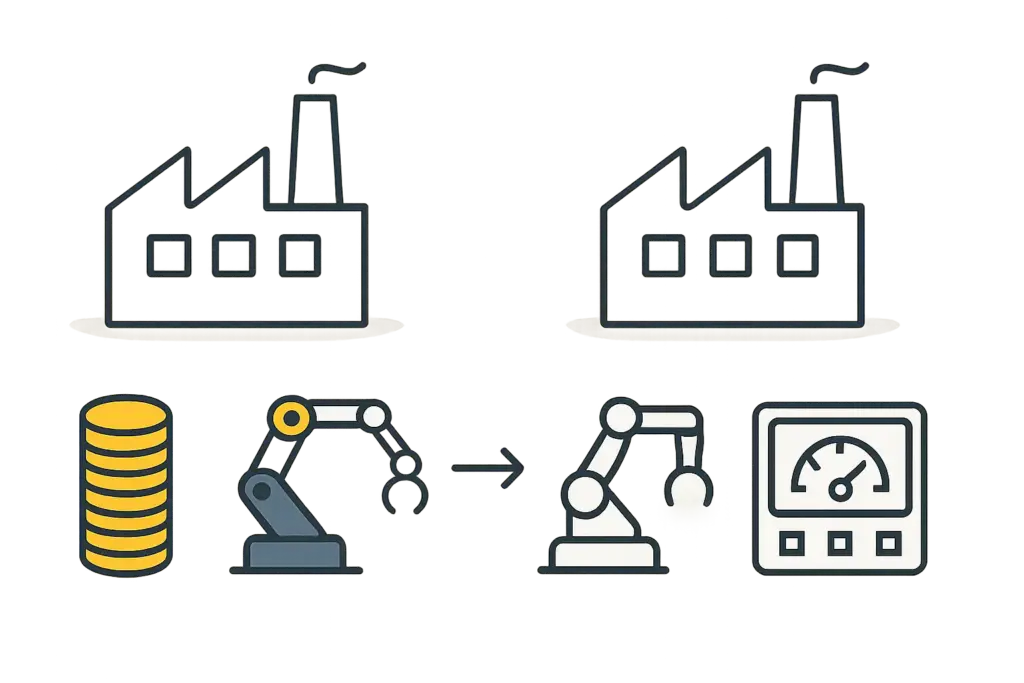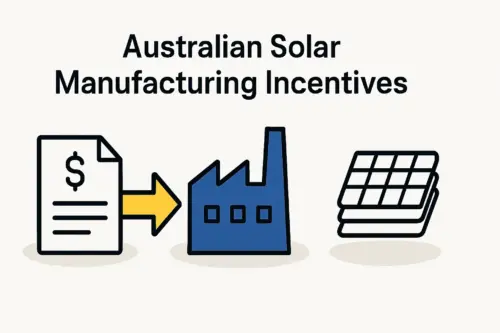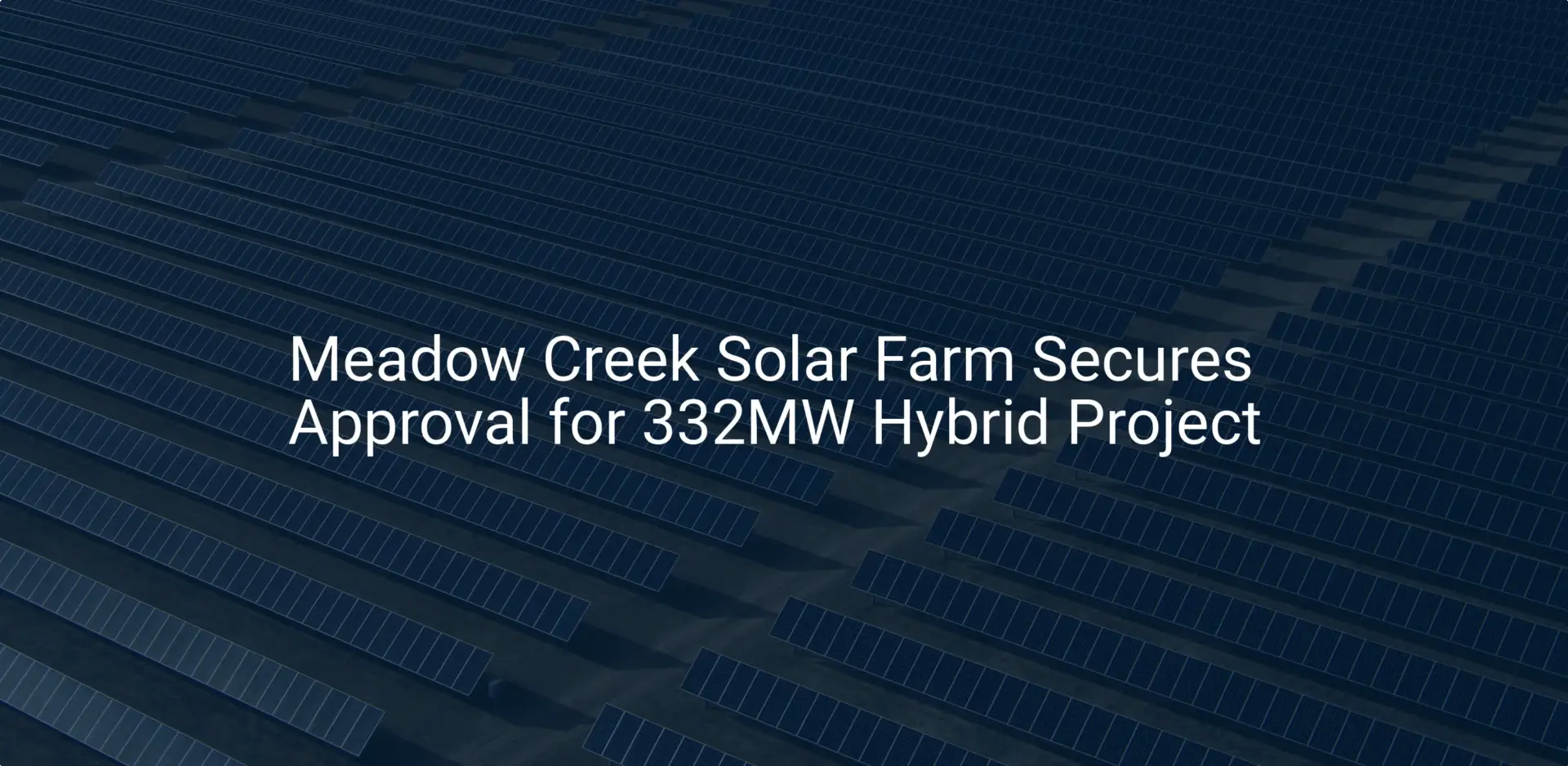With Australia’s growing commitment to solar energy, we’re seeing a significant opportunity to establish local solar manufacturing facilities. It’s an exciting prospect, but turning this ambition into a reality requires a critical resource: a skilled, capable, and available workforce.
For any entrepreneur or investor looking at this sector, understanding the nuances of building that workforce isn’t just important—it’s fundamental.
Table of Contents
The Australian Solar Manufacturing Landscape & Workforce Imperative
Right now, Australia’s solar manufacturing capacity is focused primarily on module assembly, with limited upstream capabilities in areas like polysilicon, wafer, or cell production. The existing capacity stands at around 160 MW. However, government ambitions, such as the Solar Sunshot program, signal a clear drive to expand domestic production in a big way.
This expansion isn’t just about producing panels. It’s about strengthening our energy security, fostering genuine innovation, and creating substantial employment. A complete domestic solar manufacturing value chain could create up to 60,000 jobs here in Australia. Realizing that incredible potential hinges on one thing: developing a robust domestic workforce with the specialized skills needed for modern solar manufacturing.

Decoding the Skills Matrix: What Expertise Does a Solar Factory Need?
Building a solar factory workforce demands more than filling general manufacturing roles; it requires a specific blend of technical, engineering, and operational expertise.
Engineering & Design
Qualified engineers are the brains of the operation, absolutely crucial for process optimization, quality assurance, and innovation. Key roles include:
- Process Engineers: To design, implement, and constantly refine manufacturing processes.
- Electrical Engineers: For system design, integration, and troubleshooting all things electrical.
- Chemical Engineers: Essential if your operations include upstream processes like polysilicon refining or wafer manufacturing.
- Material Scientists: To work on material selection, quality control, and the development of next-generation solar cell technologies.
- Research & Development (R&D) Roles: For continuous improvement and adapting to the fast-paced world of new PV technologies.
Skilled Technicians
Your technicians are the backbone of the day-to-day, ensuring machinery runs smoothly and your product quality is consistently high.
- Automation & Robotics Technicians: Modern solar manufacturing is highly automated. This makes technicians skilled in programming and maintaining robotic systems absolutely vital.
- Maintenance Technicians: Specialized in the upkeep and repair of sophisticated—and expensive—solar manufacturing equipment.
- Quality Control (QC/QA) Technicians: To implement quality checks at various stages of production and ensure every module meets stringent standards.
- Solar Cell and Module Fabrication Technicians: With the specific, delicate skills needed for handling and processing components like solar cells and assembling them into modules.
Production & Operations
Of course, efficient management and execution are what turn a factory into a successful business.
- Plant Managers & Production Supervisors: To oversee operations, manage teams, and make sure production targets are met.
- Machine Operators & Assembly Line Workers: Skilled in operating specific manufacturing equipment and performing assembly tasks with precision.
- Supply Chain and Logistics Personnel: To manage the seamless flow of raw materials in and finished goods out.
Essential Soft Skills & Emerging Competencies
Beyond technical qualifications, certain soft skills are indispensable: strong problem-solving abilities, meticulous attention to detail, and effective teamwork. As factories become “smarter,” new competencies like data literacy and an understanding of the Internet of Things (IoT) in a manufacturing setting will only grow in importance.
Bridging the Gap: Training & Developing Your Solar Workforce
While Australia has a strong foundational education system, specific upskilling and targeted training will be necessary to meet the demands of a burgeoning solar manufacturing sector. Tapping into a skilled expatriate workforce may be a practical first step, but the long-term goal must be a sustainable, local talent pipeline.
Ready to make big Profits?
The solar Industry is Booming
WE HELP NEWCOMERS to the solar industry start their own solar module production line. Customers can make BIG PROFITS by selling modules and finding investors, without wasting money and time on things they don't need!
Leveraging Australia’s Education System
- Vocational Education and Training (VET) Sector: Technical and Further Education (TAFE) institutes are fantastic resources, offering adaptable courses in manufacturing, engineering trades, and electronics. Apprenticeships will be a key pathway for developing hands-on skills.
- Universities: Graduates from engineering (electrical, mechanical, chemical, materials science) and renewable energy programs form a pool of high-level talent. Collaborations between industry and universities can help tailor curricula to meet your specific manufacturing needs.
Industry-Specific Training & Certifications
Organizations like the Clean Energy Council offer various programs, but there is a growing need for specialized training modules focused directly on solar manufacturing processes. These could cover everything from silicon purification to advanced module assembly techniques.
In-House Training & Upskilling Strategies
Companies will need to invest in their own robust internal training programs. This includes structured on-the-job training, mentorship programs, and, critically, knowledge transfer from experienced international staff to local hires. Continuous professional development will also be essential to keep pace with rapid technological advancements.
Government Support for Workforce Development
The Australian Government recognizes the need to skill up the clean energy workforce. We’re seeing initiatives like a $91 million investment over five years (from the 2024–25 budget) aimed at developing this very sector. State-level programs also offer great models of support that could be expanded. It’s advisable to investigate all available federal and state funding for training and apprenticeships.

Understanding Labor Costs in Australian Solar Manufacturing
Labor costs are a significant factor in a solar factory’s operational expenditure. Getting a handle on these costs is crucial for financial planning and assessing your competitiveness.
Typical Salary Ranges
Salaries will vary based on role, experience, qualifications, and location. While precise data for solar manufacturing roles is still emerging, we can look to related sectors for guidance:
- Engineers (e.g., Solar, Process, Electrical): Entry-level positions might range from AUD $70,000 to $90,000 per annum. Mid-career engineers could expect AUD $90,000 to $140,000+, while senior roles can exceed AUD $150,000.
- Specialized Technicians (Automation, Maintenance, QC): Salaries could range from AUD $65,000 to $95,000+, depending on specialization and experience.Production Supervisors: Likely to be in the AUD $75,000 to $110,000 range.
- Skilled Operators & Assemblers: Wages might range from AUD $55,000 to $75,000.
Remember, these are indicative figures and should always be validated through specific market research during your planning phase.
On-Costs and Total Cost of Employment
Beyond base salaries, employers must account for significant on-costs. This is a critical point that can sometimes be underestimated. These include:
- Superannuation: Currently 11% (and legislated to rise).
- Payroll Tax: Varies by state and territory.
- Workers’ Compensation Insurance: Premiums vary by industry risk and claims history.
- Leave Entitlements: Annual leave, personal/carer’s leave, and long service leave.
All told, these on-costs can add approximately 25–35% or more to the base salary, which significantly impacts the total cost of employment.
Factors Influencing Labor Costs
Several factors will influence your specific labor costs:
- Location: Wages and on-costs differ between states and between metropolitan and regional areas.
- Experience and Skill Specialization: Highly specialized individuals will command higher salaries.
- Unionization: Enterprise bargaining agreements (EBAs) can influence wage rates and conditions.
Competitiveness
Australian manufacturing labor costs are generally higher than in major solar manufacturing regions like China. Reports suggest Australian solar module production costs could be around AUD $0.17/W compared to China’s AUD $0.12/W, with labor being a key contributor. Strategies to enhance productivity and automation will be critical for maintaining competitiveness.
Recruitment & Retention: Attracting Australia’s Best Solar Talent
Securing the right talent requires a proactive approach.
- Targeted Recruitment: Use industry-specific job boards, professional networks like LinkedIn, and forge partnerships with educational institutions.
- Addressing the Expatriate Need: A clear strategy for attracting skilled expatriates, coupled with robust knowledge transfer programs, will be crucial in the initial phases.
- Attractive Work Environment: Competitive remuneration is just the start. Opportunities for career advancement, investment in training, and a positive company culture are key to attracting and retaining staff.
- Diversity and Inclusion: Building a diverse workforce brings a wider range of skills and perspectives. Past initiatives focusing on including women, youth, and Indigenous Australians provide a great model to follow.

The Path Forward: Building a Sustainable Solar Manufacturing Workforce
Developing a skilled and sustainable solar manufacturing workforce in Australia is a long-term commitment. It requires genuine collaboration between industry, government, and our educational institutions. This involves:
- Investing in modern training facilities and programs.
- Creating clear and rewarding career pathways within the solar manufacturing sector.
- Promoting the industry as an attractive, innovative, and stable source of employment.
Ultimately, investing in your workforce is not merely an operational cost; it is a strategic investment in the long-term success of your solar manufacturing venture and in Australia’s clean energy future.
Want to learn more or need expert help? Visit our free e-course or explore our services. Or, if you’re ready to dive deeper, our Premium Business Plan E-Course offers personalized guidance to get your venture off the ground. Let’s make your solar journey smooth and successful.
Frequently Asked Questions (FAQs)
Q1: What are the most critical skill gaps in Australia for solar manufacturing?
A: While Australia has a skilled general manufacturing and engineering base, the specific gaps are in advanced solar PV manufacturing. This includes cell fabrication, operation of specialized automated lines, and process engineering for solar materials. Initially, experienced expatriates will likely be needed to fill these roles.
Q2: How significant are labor costs in Australian solar manufacturing compared to international benchmarks?
A: Labor costs in Australia are higher than in major hubs like China, impacting production costs (e.g., AUD $0.17/W vs. China’s AUD $0.12/W). To manage this, a focus on efficiency, automation, and producing high-value products will be key to competing.
Q3: What government support is available for training a solar factory workforce?
A: The federal government has committed significant funds (e.g., $91 million over five years) to support clean energy workforce development. State governments also offer grants and subsidies for vocational training and apprenticeships. I’d advise researching current programs through Jobs and Skills Australia and relevant state departments.
Q4: How can a new solar manufacturing company attract experienced engineers and technicians?
A: Beyond competitive salaries, attract top talent by offering work with cutting-edge technology, clear career paths, and visible investment in training. Fostering an innovative culture and highlighting the company’s role in Australia’s renewable energy future are also powerful motivators.
Q5: What role do VET (Vocational Education and Training) providers like TAFE play?
A: VET providers are crucial for developing the skilled technician and operator workforce. They offer specialized courses, certifications, and apprenticeships in manufacturing, electronics, and renewable energy. Close collaboration between manufacturers and TAFE institutes is essential to ensure training programs meet real-world industry needs.






